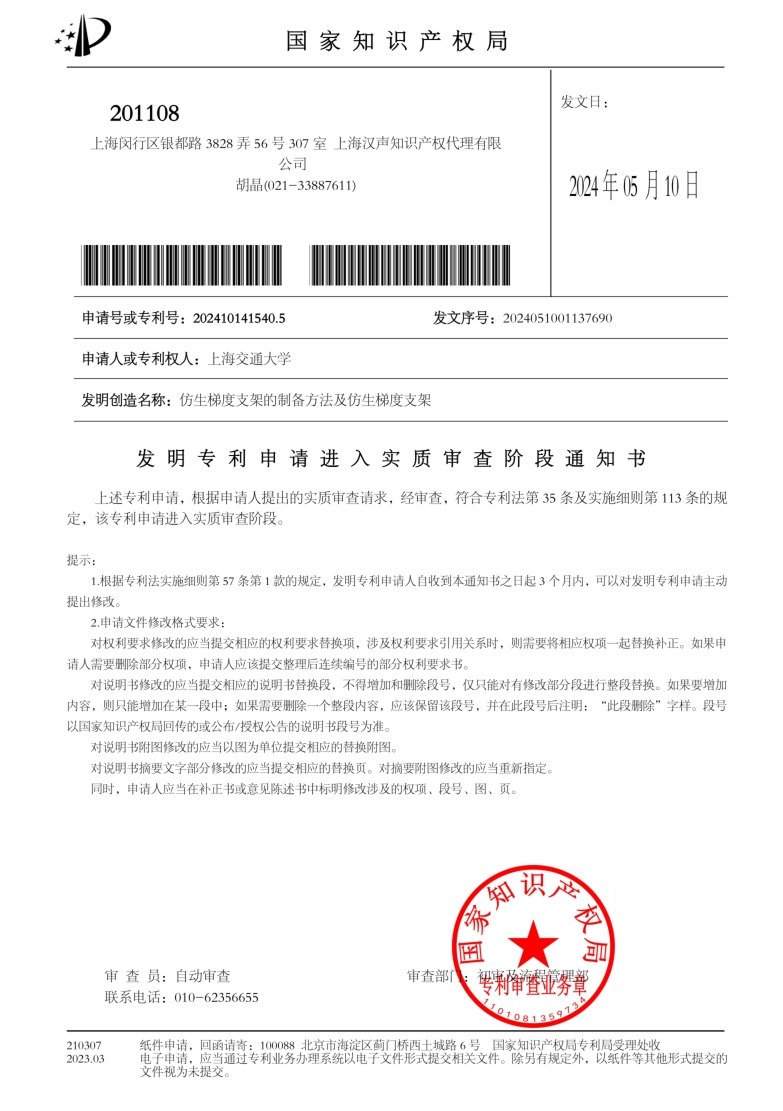本发明提供了一种仿生梯度支架的制备方法及仿生梯度支架,包括如下步骤:步骤1:对大段骨缺损部位进行扫描,获取缺损区域数据,将所获取的数据导入建模软件中重构形成骨缺损三维模型;步骤2:基于所重构的骨缺损三维模型,确定骨缺损部位的相关参数,在建模软件中模拟植入位点及虚拟骨尺寸,生成能够覆盖骨缺损部位的梯度支架的三维结构模型;步骤3:将梯度支架的三维结构模型导入建模软件进行切片,切片后数据导入3D打印设备,打印生成梯度支架;步骤4:对打印生成的梯度支架进行冷却,除去支撑结构,对梯度支架的表面进行抛光处理。本发明的镁合金骨组织工程支架具有三维联通性好、孔径孔隙率可控和孔隙形状精度高、梯度结构仿生的特点。
This invention provides a method for preparing a biomimetic gradient scaffold and a biomimetic gradient scaffold, which includes the following steps: Step 1: Scan the large segment of bone defect area to obtain data of the defect region, and import the obtained data into modeling software to reconstruct a three-dimensional model of the bone defect; Step 2: Based on the reconstructed three-dimensional model of the bone defect, determine the relevant parameters of the bone defect area, simulate the implant site and virtual bone size in the modeling software, and generate a three-dimensional structural model of a gradient scaffold that can cover the bone defect area; Step 3: Import the three-dimensional structural model of the gradient scaffold into the modeling software for slicing, and import the sliced data into a 3D printing device to print the gradient scaffold; Step 4: Cool the printed gradient scaffold, remove the support structure, and polish the surface of the gradient scaffold. The magnesium alloy bone tissue engineering scaffold of this invention features good three-dimensional connectivity, controllable pore size and porosity, high precision of pore shape, and biomimetic gradient structure.
